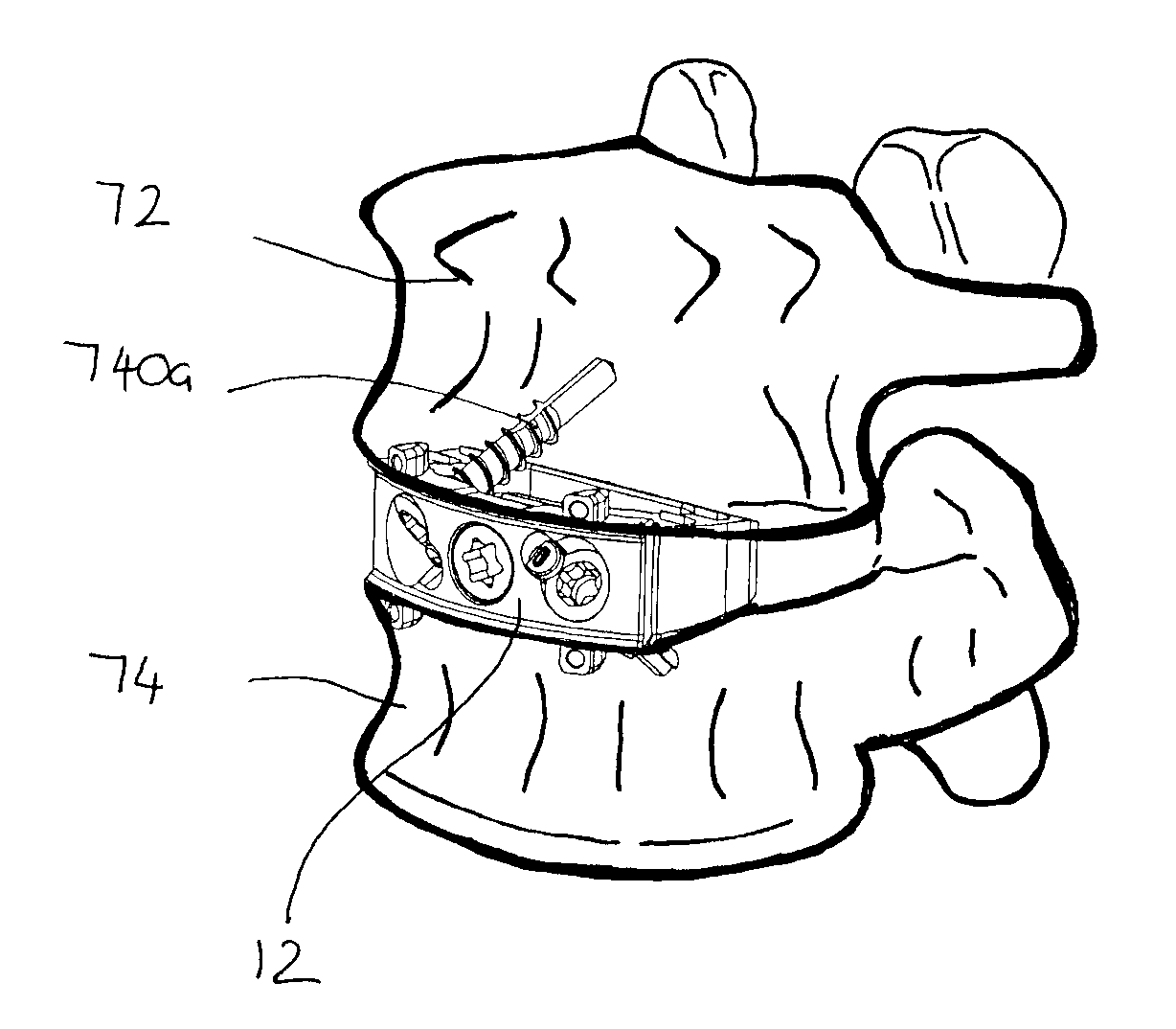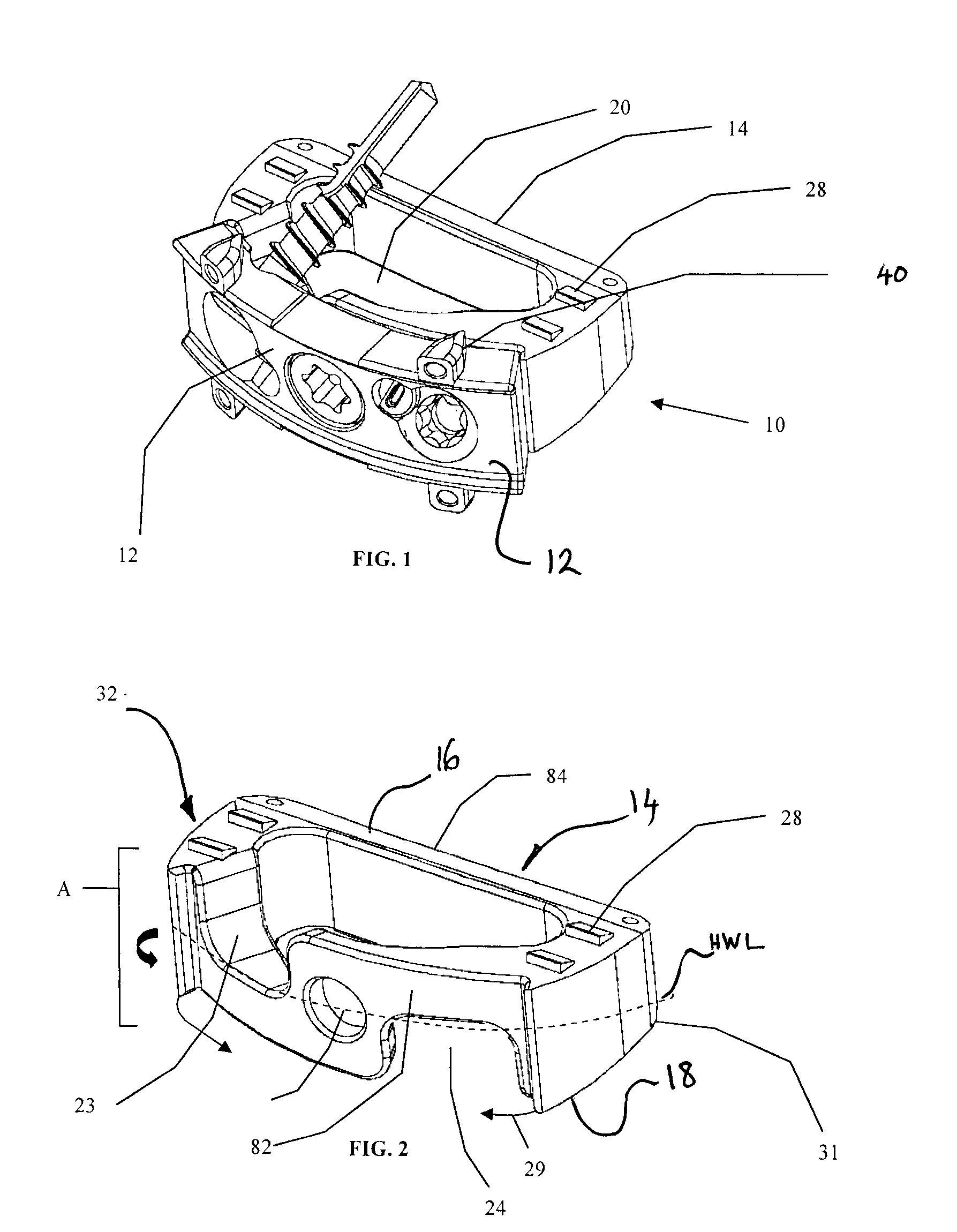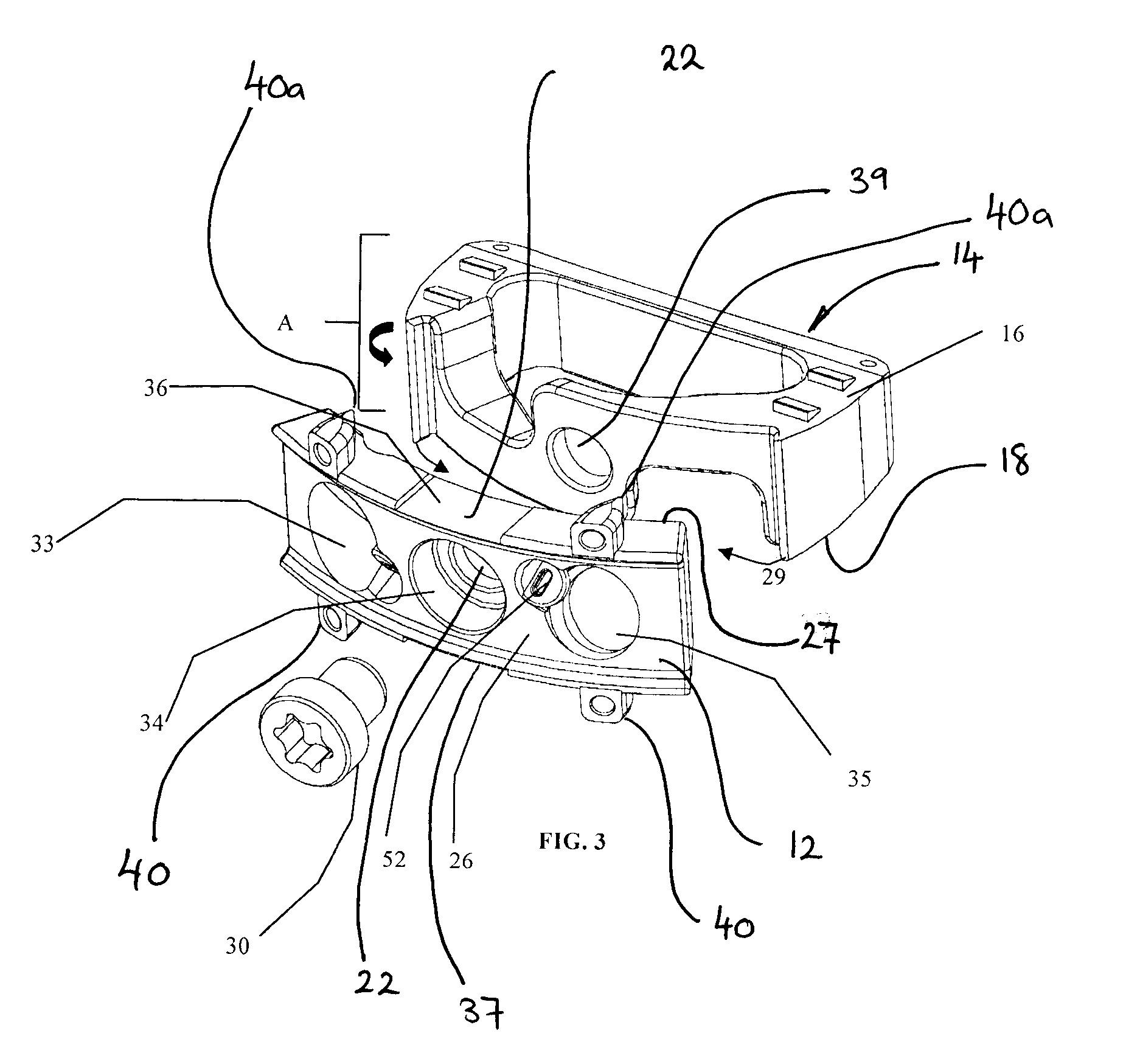Orthopaedic Implants and Prostheses
- Summary
- Abstract
- Description
- Claims
- Application Information
AI Technical Summary
Benefits of technology
Problems solved by technology
Method used
Image
Examples
example 1
[0047]With reference to FIGS. 1-8 a spinal implant embodiment will now be described. FIG. 1 shows an anterior perspective view of a spinal implant 10 embodiment that includes a plate component 12 and a spacer component 14. The spacer component 14 comprises a cavity 20 defined therein for disposing a bone ingrowth material. The plate component 12 comprises a keel 40 having an apex that serves to penetrate the bone surface of a vertebral body. It should be noted that the plate 12 may be utilized with or without the spacer component 14.
[0048]FIG. 2 shows a perspective view of the spacer component 14. The spacer component 14 has an anterior body portion 82 and a posterior body portion 84. The spacer component 14 also has a lateral end 31 and a lateral end 32. The spacer component has a top surface 16 and a bottom surface 18 (see FIGS. 4, 5&6d) and a side perimeter surface A. The anterior body portion 82 has an anterior side 29. On the anterior side 29 of the anterior body portion 82 is ...
example 2
[0053]FIG. 9 shows a two-hole buttress plate 900 and FIG. 10 shows a one-hole buttress plate 1000 suitable for securing an implant within a vertebral cavity and particularly suitable for adding a further degree of security of fixing to the implant embodiments shown herein. The buttress plates 900 and 1000 are designed to attach to a vertebral body that is either superior to an intervertebral space into which an implant has been positioned such as that shown in FIGS. 11 and 12, or inferior to the intervertebral space into which an implant is positioned, or could be more than one with one buttress plate superiorly secured and one inferiorly secured. The buttress plates 900, 1000 may be secured with any suitable fastener, but are advantageously secured with the screws 740 such as that described above in relation to FIGS. 4 and 5, that are passed through either two holes for plate 900 or one hole for plate 1000 (holes hidden underneath head of screw). Figures. 9 and 10 also shows shifta...
example 3
[0055]Turning now to FIG. 13, a side perspective view of an implant 1300 is shown, which is particular useful for a lateral surgical approach. The implant 1300 comprises a spacer component 1314 and a plate component 1312. The spacer component 1314 comprises an anterior body portion 1382 and a posterior body component 1384. The plate component 1312 comprises cam locks 1351, 1352 which assist in preventing “backing out” of screws passing through channels in the plate component 1312, which is discussed in further detail below.
[0056]FIG. 14 shows a side perspective view of the spacer component 1314. The spacer component 1314 has a first lateral end 1331 and a second lateral end 1332. The spacer has a side perimeter surface as depicted by the arrows. Defined in the first lateral end 1331 are a first fixator portal 1323 and a second fixator portal 1324 which open at the side surface 1329 of the first lateral end 1331. Again, the portals are open to the immediately adjacent planar upper or...
PUM
 Login to View More
Login to View More Abstract
Description
Claims
Application Information
 Login to View More
Login to View More - R&D
- Intellectual Property
- Life Sciences
- Materials
- Tech Scout
- Unparalleled Data Quality
- Higher Quality Content
- 60% Fewer Hallucinations
Browse by: Latest US Patents, China's latest patents, Technical Efficacy Thesaurus, Application Domain, Technology Topic, Popular Technical Reports.
© 2025 PatSnap. All rights reserved.Legal|Privacy policy|Modern Slavery Act Transparency Statement|Sitemap|About US| Contact US: help@patsnap.com



